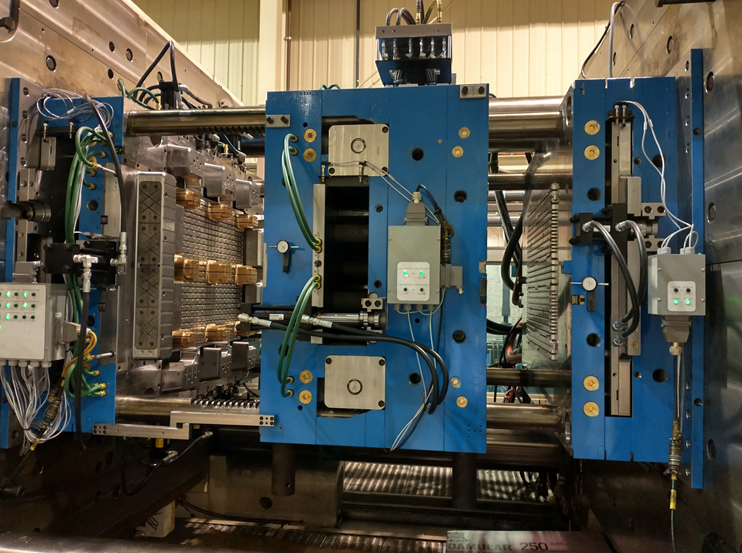Molding Parts: The Key to Precision Engineering and Production Efficiency
In the world of manufacturing, precision engineering and production efficiency are crucial for success. From automotive to aerospace, electronics to medical devices, industries rely on the ability to produce high-quality parts with accuracy and speed. One technique that has revolutionized manufacturing processes is molding parts.
Molding is a manufacturing process where a liquid or pliable material is poured or injected into a mold to create a desired shape. This technique allows for the production of intricate and complex parts with tight tolerances. Molding parts offer numerous advantages over traditional manufacturing methods, including cost-effectiveness, consistency, and versatility.
One of the significant benefits of molding parts is cost-effectiveness. Compared to other manufacturing techniques, such as machining or casting, molding requires less material and energy consumption. The molds used in the process can be made from various materials, including metals, plastics, and composites, depending on the specific requirements of the part. These molds can be reused multiple times, resulting in lower production costs and higher profitability for manufacturers.
The consistency of molded parts is another crucial factor in precision engineering. Molding allows for the production of parts with consistent dimensions and characteristics. The molds used in the process are precisely designed and engineered to ensure the accurate replication of the desired shape. This consistency is essential in industries where the interoperability and interchangeability of parts are critical, such as the automotive and electronics sectors. By using molds, manufacturers can produce parts that fit perfectly with other components, reducing assembly errors and improving overall product quality.
Moreover, molding parts offer versatility that is unmatched by other manufacturing methods. The process can be used to create parts of various sizes, shapes, and complexities – from tiny electronic components to large automotive panels. Additionally, molding allows for the incorporation of inserts, such as metal or electronic components, during the production process. This enables the integration of multiple functionalities into a single part, reducing the need for additional assembly steps.
The efficiency of molding parts is not limited to the production process alone. It also extends to post-processing operations, such as finishing and surface treatments. Molding allows for the creation of parts with smooth surface finishes, reducing the need for additional polishing or grinding. This saves time and resources, resulting in faster production cycles and improved overall productivity.
The advancements in molding technology have further enhanced precision engineering and production efficiency. Computer-aided design (CAD) and computer-aided manufacturing (CAM) software enable the precise design and simulation of molds before they are physically produced. This virtual prototyping process allows manufacturers to identify potential design flaws or production issues early on, minimizing costly errors and reducing time to market.

Furthermore, automation has played a significant role in optimizing molding processes. Automated systems, such as robotic arms and conveyor belts, can handle the injection or pouring of materials into molds, reducing the need for manual labor. This not only improves production efficiency but also enhances workplace safety by minimizing human exposure to hazardous materials or repetitive tasks.
Molding parts have become the key to precision engineering and production efficiency in today\’s manufacturing industries. The cost-effectiveness, consistency, and versatility of molding make it an indispensable technique for producing high-quality parts with accuracy and speed. With continued advancements in molding technology and automation, manufacturers can expect even greater efficiency and productivity in the future.
سابق:Automotive Molded Parts: Precision Engineering for Superior Performance
التالي: Design and Manufacturing of Plastic Injection Chair Mould: Ensuring Quality and Efficiency
-
Industrial Trash Bin Mould: Creating the Perfect Waste Management Solution
2023-6-15
In today's fast-paced world, one of the most pressing issues is waste management. Industrial waste production has been o...
عرض التفاصيل -
Precision Injection Molded Parts for Superior Performance and Durability
2023-5-22
Precision injection molded parts offer superior performance and durability for a variety of industries. Injection moldin...
عرض التفاصيل -
Industrial plastic molds: the cornerstone of precision manufacturing
2024-8-19
In the modern industrial system, plastic molds, as the core tools for the production of plastic products, play an indisp...
عرض التفاصيل -
Creating Molding Parts for Home Appliances
2023-4-23
Molding is an important process in manufacturing home appliances. This process involves creating a mold or pattern that ...
عرض التفاصيل -
Creating a Chair Mold: A Guide to Crafting Your Own Unique Seating Design
2023-6-10
Chairs are essential pieces of furniture in any space, be it in your home, office, or public area. They provide comfort ...
عرض التفاصيل -
Precision Engineering and Innovation: The Art of Creating Automotive Molds
2023-6-6
The automotive industry is continuously evolving, and with it, the demand for precision engineering and innovation in th...
عرض التفاصيل







